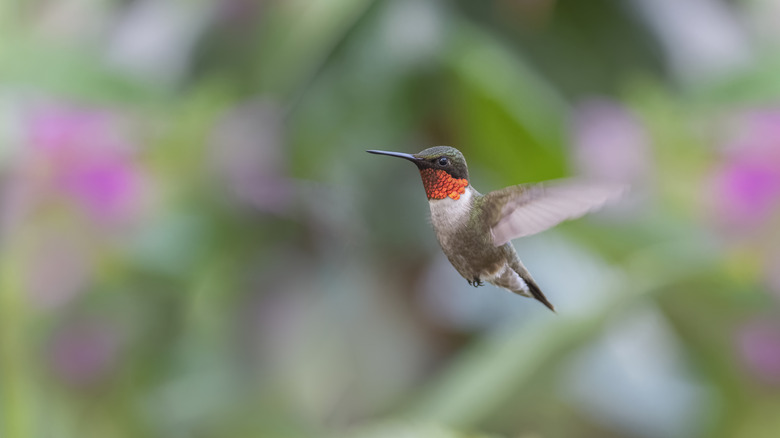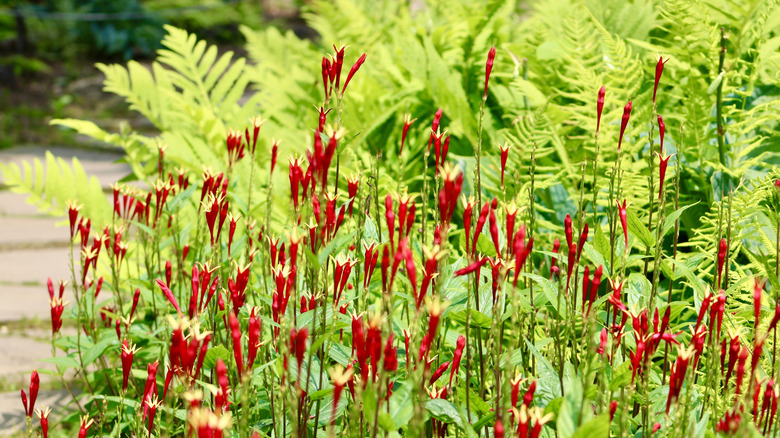Easily Attract Hummingbirds With A Spectacular Tubular Flower They Can't Resist
If you want to attract hummingbirds to your yard in the warmer months, don't overlook woodland pinkroot (Spigelia marilandica) when you plant your hummingbird-friendly garden. The deep red, tubular flowers are simply irresistible to the little hummers, particularly the ruby-throated hummingbird, as they eagerly sip nectar from trumpet-shaped blooms. A herbaceous perennial, woodland pinkroot, or simply pinkroot, is native throughout the Southeastern United States as well in Texas and certain parts of the Midwest. Planting is easy, and the flower thrives in most gardens, developing in early spring when it's ready to welcome the gentle buzzing of hummingbirds, as well as other area pollinators.
Up in the air, hummingbirds navigate using flower color as a beacon, as they most likely have a faint sense of smell due to their small olfactory bulbs. They seek out such favorites as red, pink, and orange florals. The showy blooms of woodland pinkroot easily attract and entice them to the nectar they require to keep up their frenetic routine of daily visits to over 1,000 flowers. Like other flowers that hummingbirds absolutely love, pinkroot's tublar shape is the perfect shape, long and slender to fit hummers' bills in to draw in nectar.
How to grow woodland pinkroot to attract hummingbirds
Woodland pinkroot is a low-maintenance plant perfect for your beginner hummingbird garden. Blooming in spring, some locations see flowers in March and April, while others witness it in May to June. You can also extend the bloom period with deadheading so hummers stay around longer. The plant grows in clusters, standing 12 to 24 inches tall with five red petals filled with yellow as it blossoms. As a bonus, it's one of the best flowering plants that are deer-resistant. As it's a hearty plant with nearly no threat of pest or disease, risk of damage is low with proper care.
While pinkroot can tolerate most soils, however, moist, sandy soil is best. Like its name implies, it prefers woodland areas but is a showstopper for pond areas, or in a container. Hardy in USDA zones 5 to 9, you should plant it in late summer to fall. Clemson Cooperative advises using acid-forming fertilizers for optimal results as it loves acidic soil. You can grow it in full to partial shade, with a maximum of 2 to 6 hours of direct sunlight, and an average watering schedule, watering every one to two weeks. Suitable companion plants include phlox and hostas, but you must be careful when planting it next to aggressive flowers, as they can easily overtake it. Woodland pinkroot's toxic nature means you must take precautions if you have pets or small children. It contains alkaloid spigiline, a poison that results in convulsions, vomiting, increased heartbeat, vertigo, and even death in humans. Animal reactions include vomiting, diarrhea, depression, and heart rhythm disturbances, as well as death.

